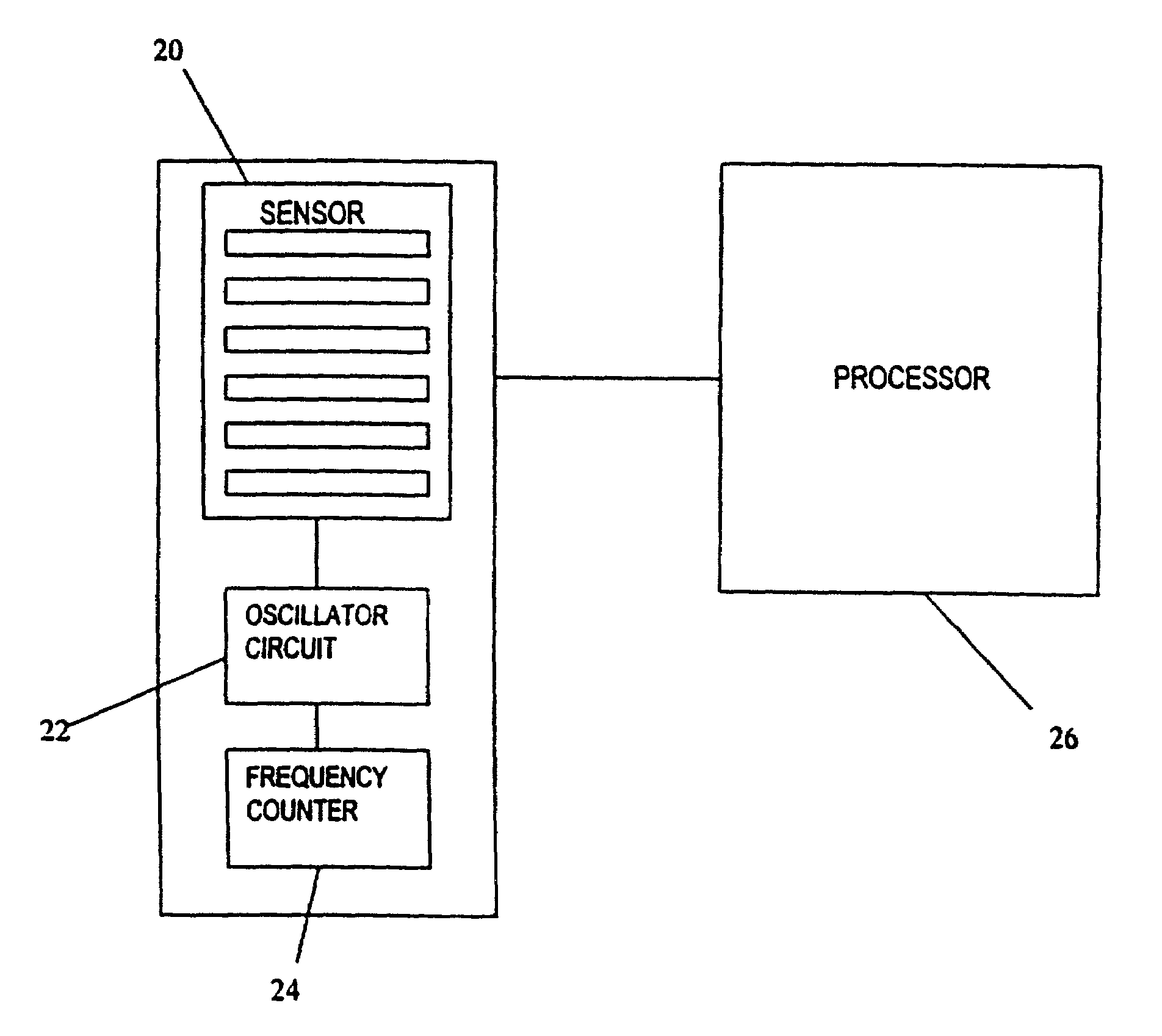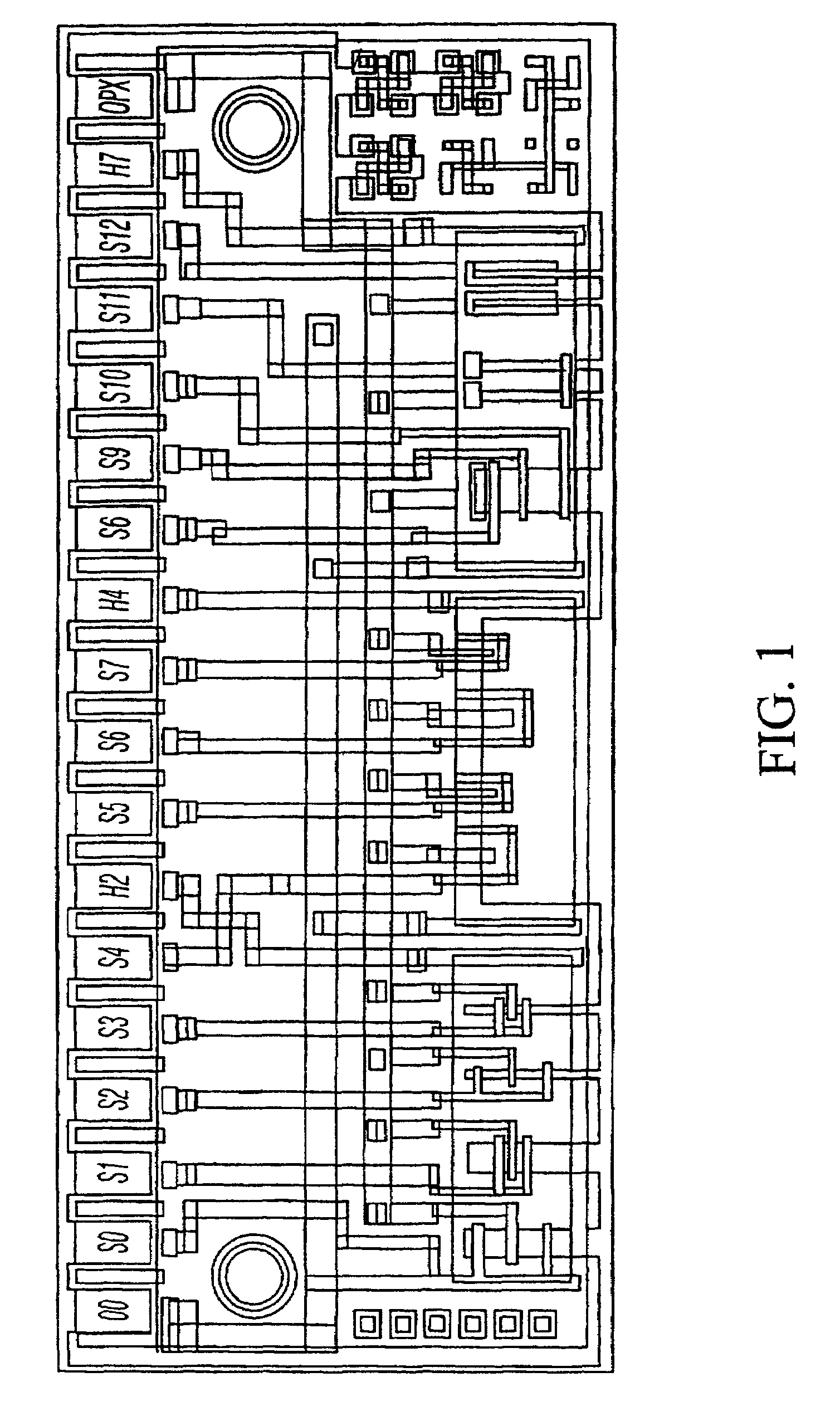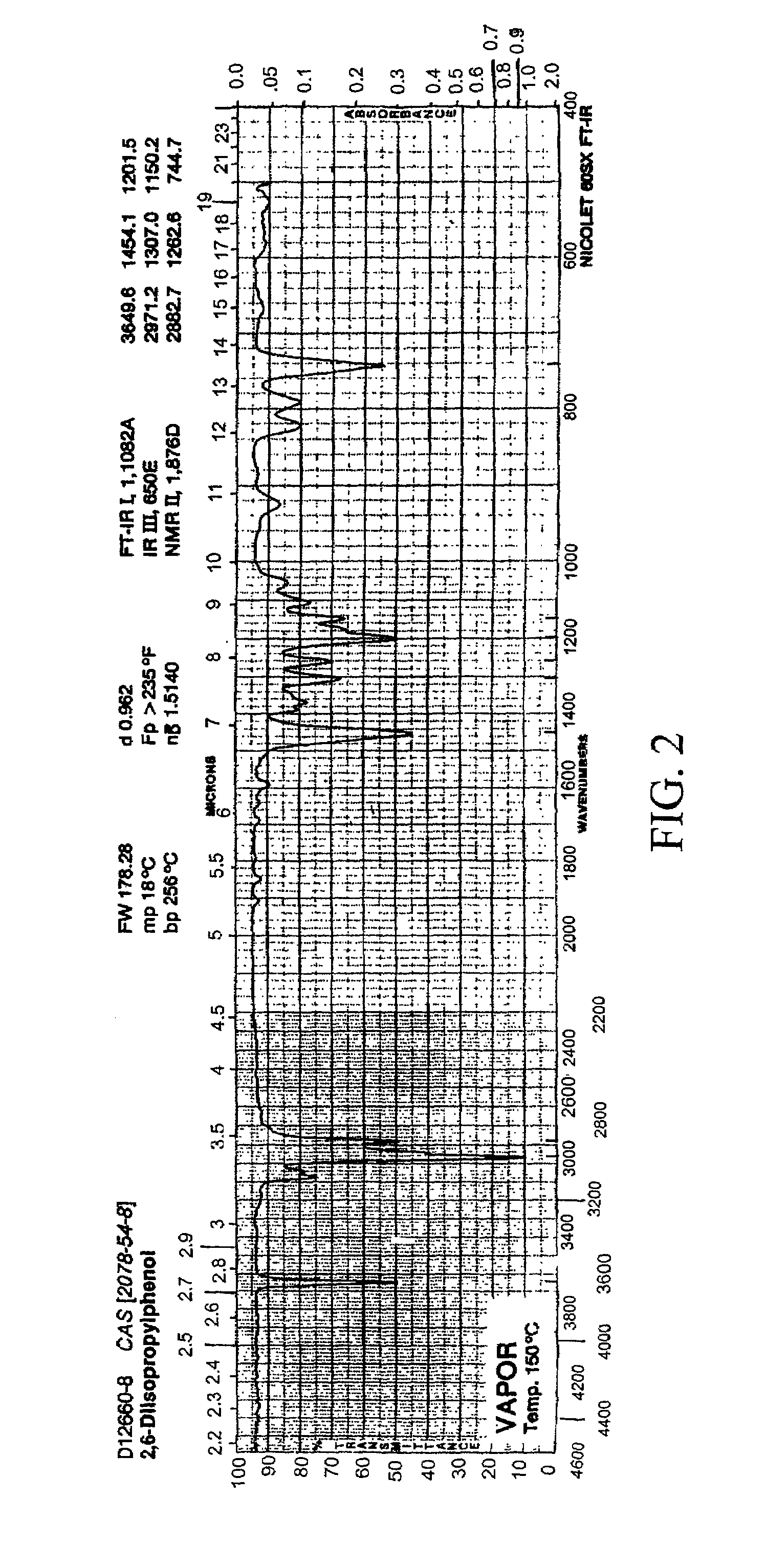Method and apparatus for monitoring respiratory gases during anesthesia
a technology for respiratory gases and anesthesia, applied in the field of non-invasive monitoring of substance/compound concentrations, can solve the problems of volatile anesthesia, difficult calibration and maintenance, and many sophisticated and expensive monitors used by anesthesiologists to monitor, etc., and achieves good correlation and predictive
- Summary
- Abstract
- Description
- Claims
- Application Information
AI Technical Summary
Benefits of technology
Problems solved by technology
Method used
Image
Examples
example i
[0092]Estimating the Depth of Intravenous Propofol Anesthesia by Measurement of Exhaled Breath Propofol Vapor Concentration and Monitoring Supplemental Inhalation Anesthesia
[0093]The initial intravenous administration of propofol may be either in a bolus of 2 to 5 mg / kg or by a continuous infusion of 25 to 200 mcg / kg / min resulting in a plasma concentration in the 1 to 10 mcg / ml range. The depth of anesthesia (or sedation) achieved depends on patient characteristics as well as the simultaneous use of other drugs such as opioids and nitrous oxide.
[0094]For most administrations of propofol at anesthetic depth, the patient's ventilation occurs through a breathing circuit attached to the patient by an external face mask, a laryngeal mask airway (LMA), or by a tube placed in the trachea. These examples of a closed circuit all facilitate positive pressure ventilation if needed, the administration of supplemental inhalation anesthesia with nitrous oxide (also measured by sensors of the pres...
example ii
[0099]Estimating the Blood Concentration of Supplemental Drugs Administered During Anesthesia and Their Concentration Trends by Measurement in Exhaled Breath. The Opioids Remifentanil and Alfentanil are Discussed as Examples
[0100]The intravenous administration of remifentanil may be either in a bolus of 0.05 to 1 mcg / kg or by a continuous infusion of 0.0125 to 2 mcg / kg / min resulting in a plasma concentration in the 0.5 to 50 ng / ml range. Similarly, alfentanil, a related opioid, may be administered either in a bolus of 10 to 300 mcg / kg or by a continuous infusion of 0.1 to 15 mcg / kg / min resulting in a plasma concentration in the 10 to 500 ng / ml range. For both drugs the effect achieved depends on the dosage, individual patient characteristics, and the simultaneous administration of other drugs. The wide dosage ranges are a result of a wide range of desired effects; from analgesia during conscious sedation to deep general anesthesia when given to supplement a small dose of a hypnotic ...
example iii
[0107]Measuring Endogenous and Exogenous Compounds such as, Ketones and Ammonia in Exhaled Breath
[0108]Normally, the exhaled breath of a person contains water vapor, carbon dioxide, oxygen, and nitrogen, and trace concentrations of carbon monoxide, hydrogen and argon, all of which are odorless. A common medical problem is halitosis, which is usually caused by the breakdown of food by bacteria producing odorants such as hydrogen sulfide, methyl mercaptan, dimethyl disulphide, indole and others. The sensor technology described herein may be used as a sensitive detector for these odorants and for the diagnosis of tooth decay, gum disease or a variety of oral, pulmonary and sinus conditions.
[0109]Other vapor phase compounds include acetone, which is present in diabetics who are in ketoacidosis, ammonia, which is present in patients with liver disease and a variety of odorants which are present in cases of lungs, stomach, gallbladder and kidney dysfunction. Exhaled breath sensing of thes...
PUM
 Login to View More
Login to View More Abstract
Description
Claims
Application Information
 Login to View More
Login to View More - R&D
- Intellectual Property
- Life Sciences
- Materials
- Tech Scout
- Unparalleled Data Quality
- Higher Quality Content
- 60% Fewer Hallucinations
Browse by: Latest US Patents, China's latest patents, Technical Efficacy Thesaurus, Application Domain, Technology Topic, Popular Technical Reports.
© 2025 PatSnap. All rights reserved.Legal|Privacy policy|Modern Slavery Act Transparency Statement|Sitemap|About US| Contact US: help@patsnap.com



